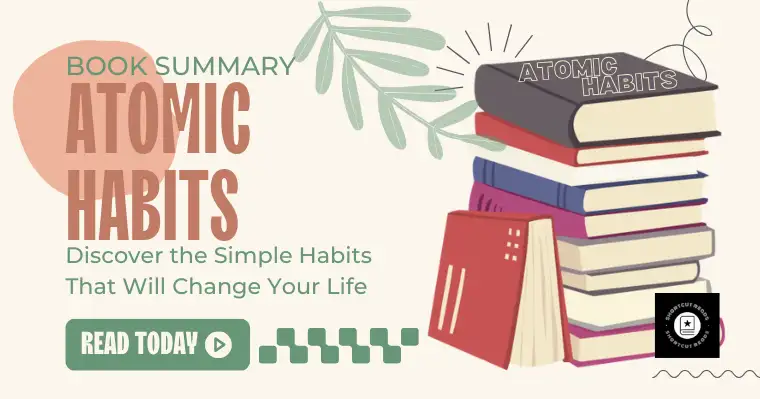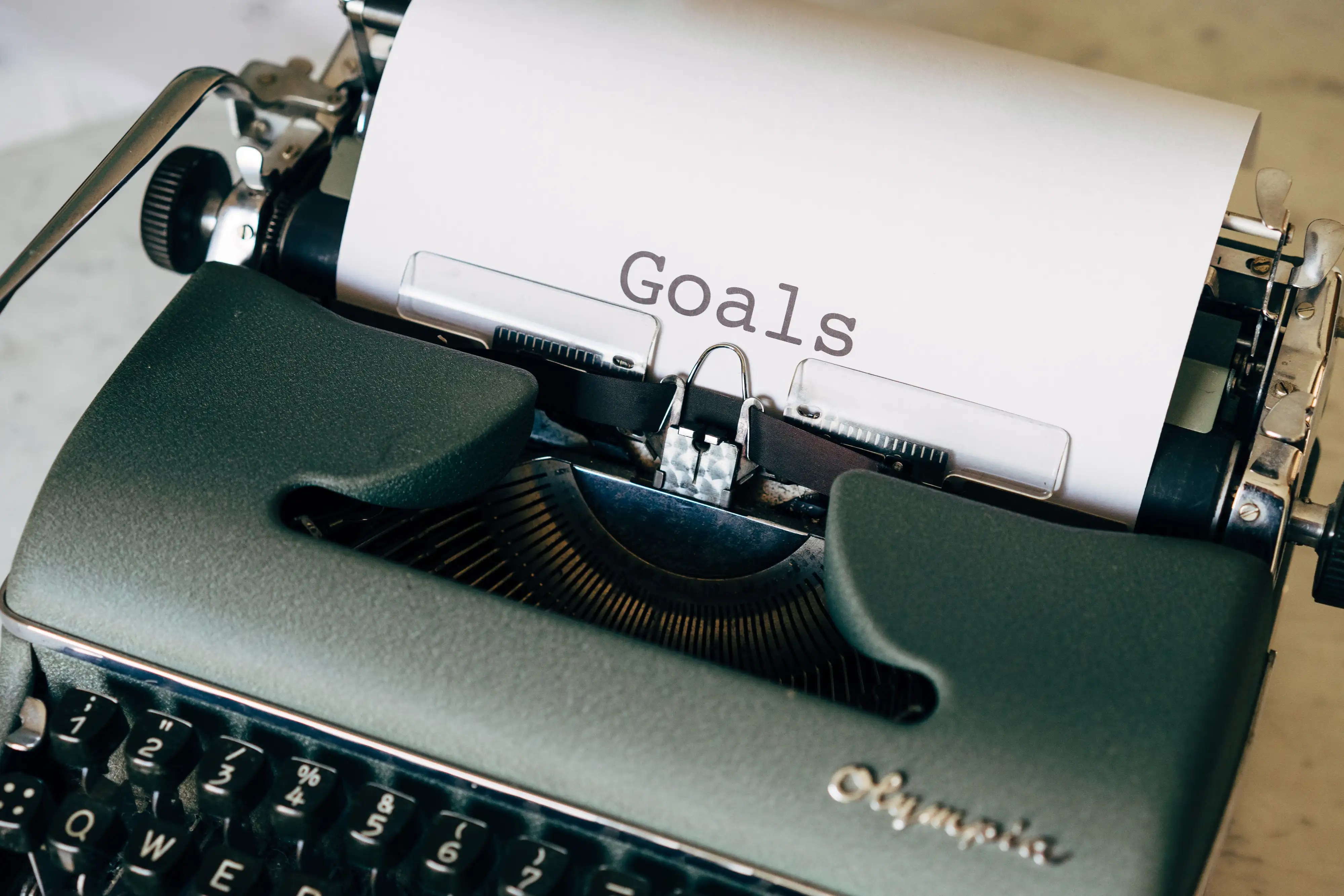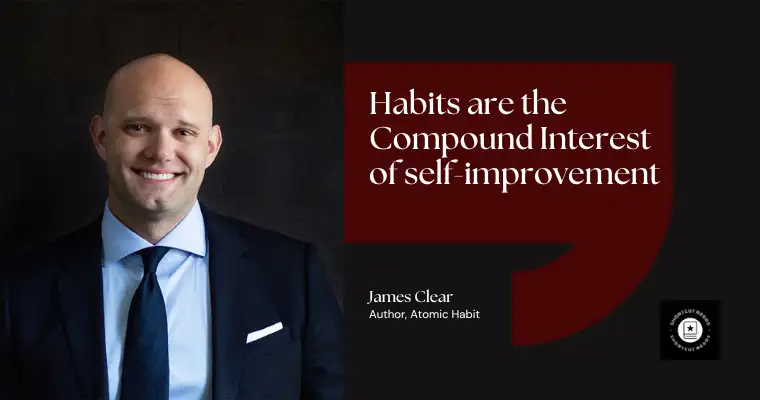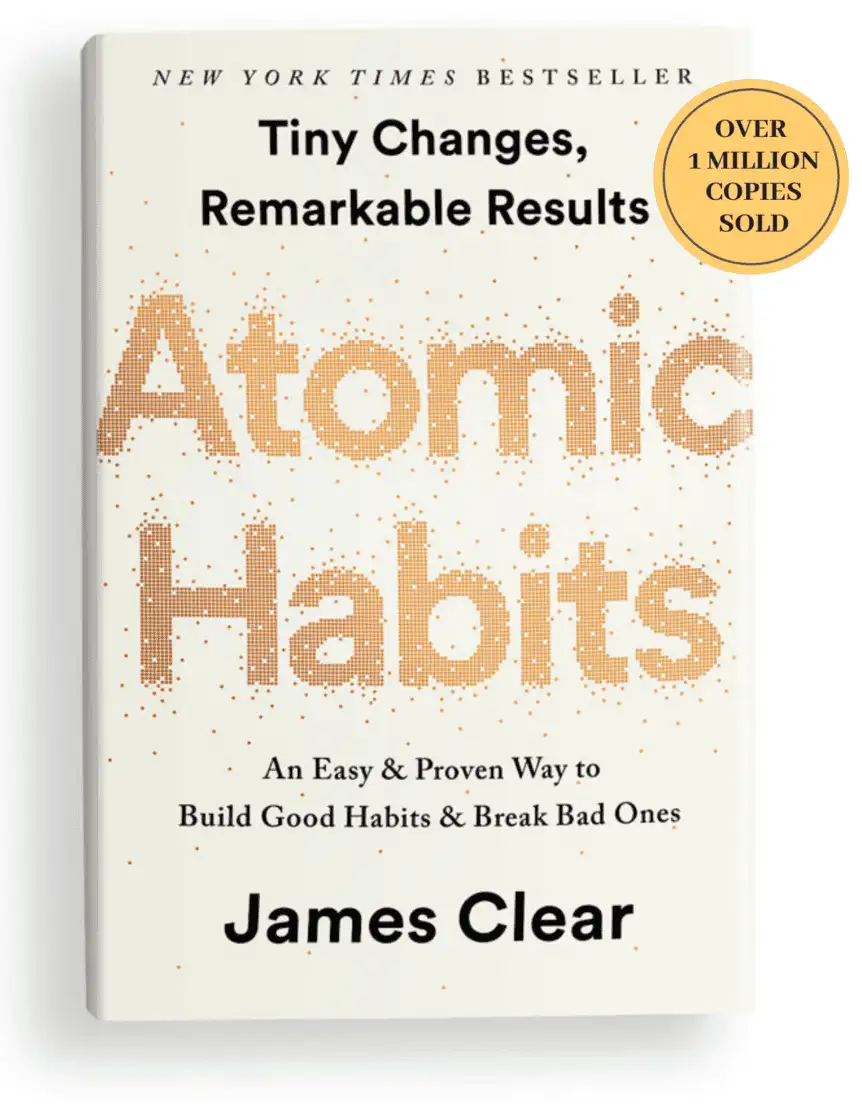14 min to read
Atomic Habits Summary: The Little Changes to Big Results
Create good habits and break bad habits

Atomic Habits is a book by James Clear that teaches you how to make small changes in your life that can lead to big results. It’s about making tiny changes that will compound over time and create massive results.
In this book summary, I will share the main insights from the four chapters of Atomic Habits by James Clear, a bestselling author and expert on habit formation.
The summary is divided into four parts:
| Cue | Make it Obvious |
|---|---|
| Craving | Make it Attractive |
| Response | Make it Easy |
| Reward | Make it Satisfying |
 Table of Contents
Table of Contents
- Table of Contents
- Atomic Habits Summary
- Conclusion
- Atomic Habit Summary PPT
- Where to Buy
- Amazon Associates Disclaimer
 Atomic Habits Summary
Atomic Habits Summary
Atomic Habits are small(molecular) habits that can lead to big results. It’s not necessary to make big changes in your life to get big results. You can make small changes that will compound over time and create massive results. Making 1% improvement every day will lead to 37x improvement in a year. It’s about making tiny changes that will compound over time and create massive results.
When you work out for 1 hour, you don’t see any results. But when you work workout for 1 hour every day for 1 year, you will see massive results. similarly, when you eat junk food for 1 day, you don’t see any results. But when you eat junk food every day for 1 year, you will see massive results.
 The Aggregation of Marginal Gains
The Aggregation of Marginal Gains
The Aggregation of Marginal Gains is the strategy of making small improvements in many different areas of your goals to make a big difference in the overall results. Tiny changes in the process can lead to big changes in the results.
From 1908 to 2003, the British cycling team didn’t win any Tour de France. In 2003, Dave Brailsford became the new performance director of the British cycling team. He used the strategy of The Aggregation of Marginal Gains to improve the performance of the team. He made small improvements in many different areas of the team to make a big difference in the overall results.
He made small improvements in the following areas:
- He redesigned the bike seats to make them more comfortable.
- He hired a surgeon to teach the riders how to wash their hands properly.
- He asked riders to wear electrically heated overshoots to maintain ideal muscle temperature.
- He Tried different fabrics in the bike suits to find the most aerodynamic material.
- He also rubbed alcohol on the tires for better grip.
These small improvements led to big results. In 2008, the British cycling team won 60% of the gold medals in the Beijing Olympics.

 Goals Vs System
Goals Vs System
According to James Clear, Goals are about the results you want to achieve. Systems are about the processes that lead to those results. Goals are good for setting a direction, but systems are best for making progress.
Getting 1 million subscribers is a goal. Posting 1 video every day is a system. Similarly, losing 10 kg is a goal. Eating healthy food every day is a system.
Goals are best for direction but systems are best for making progress. Winners and losers have the same goals but what makes winners different from losers is their systems. Set the goals but focus on the systems and processes that will lead to those goals.

 Make it Obvious - Cue
Make it Obvious - Cue
The first law of behaviour change is to make it obvious. People have goals but they don’t have a clear plan to achieve them. They want to lose weight but they don’t have a clear plan to achieve it. They want to get 1 million subscribers but they don’t have a clear plan to achieve it.
Visibility and clarity trigger the cues that lead to habits. If you want to make a habit, you need to make it visible, clear and obvious or if you want to break the bad habit, you need to make it invisible, and unobvious.
Suppose you want to read a book, you can place it on your desk so that you can see it every day and you will be reminded to read it. If you want to drink more water, you can place a water bottle on your desk so that you can see it every day and you will be reminded to drink it. It’s about making the cues obvious.
If you want to break the bad habit of checking your phone every 5 minutes, you can place your phone in another room so that you can’t see it and you will not be reminded to check it. It’s about making the cues unobvious.
To Change or remove a habit you need to be aware of it. People have bad habits but they are not aware of it. Example: People have a bad habit of eating junk food but they are not aware of it. The process of behaviour change always starts with awareness. You need to be aware of your bad habits to change them.
If you want to change the habit of eating junk food, you need to be aware of the consequences of eating junk food. Next time when you eat junk food, you will be aware of the consequences and you will be able to change the habit.
Habit stacking is a technique that can help you make a habit. Habit stacking is the process of stacking a new habit on top of an existing habit. For example, if you want to read a book, you can stack it on top of your existing habit of drinking coffee. You can read a book while drinking coffee.
The environment is also a cue that can trigger a habit. If you want to eat healthy food, you can change your environment by replacing junk food with healthy food. If you want to read a book, you can change your environment by placing a book on your desk and removing all the distractions. So, the environment is also a cue that can trigger a habit.
Our behaviour is also defined by our relationship with the object. The relationship with the working desk is to work. The relationship with the bed is to sleep. The relationship with the kitchen is to eat. So, the relationship with the object can also trigger a habit.
To change a habit, you need to change your relationship with the object. If you want to eat healthy food, you can change your relationship with the kitchen. You can cook healthy food in the kitchen.
With time, your habits become associated with the environment or object. It is easy to make a new habit in a new environment. For example, if you want to read a book, you can go to a library.
Once the habit is formed, the urge to do it becomes stronger whenever the environment or object is present and the urge to do it becomes weaker whenever the environment or object is absent.
 Make it Attractive - Craving
Make it Attractive - Craving
The second law of behaviour change is to make it attractive. The more attractive an opportunity is, the more chances that you will adapt it in your life. By making a habit attractive, you can expect a rewarding experience that will make you want to repeat it again and again.
You can make hard habits more attractive by attaching them to a positive experience. A slight shift in the mindset can make a habit more attractive. If you want to read a book, you can think that you are going to learn something new.
Humans are social animals and so our habits are also affected by the people around us. We tend to do things that are socially accepted and avoid things that are socially rejected in our society. It can lead to good habits or bad habits depending on the people around us.
Your culture(society) sets your expectations of what is normal and what is not normal. When you join a new group, you want to fit in and you have a shared identity with the group. When you join a reading group, you share the reader’s identity with other people in the group. When you join a gym, you share the gym-goer identity with other people in the gym. So, we need to join a group of people who have the habits that we want to have.
Similarly, in the case of online shopping, our habits are also affected by the reviews of other people. If you want to buy a product, you can check the reviews of other people. If the reviews are good, you will buy the product. If the reviews are bad, you will not buy the product. So, our habits are also affected by the people around us.
 Make it Easy - Response
Make it Easy - Response
Before taking any action, we always think about the outcome of the task. There are 2 things in a task, motion and action.
Motion is planning to do something and action is doing the task. It’s easy to be in motion rather than action. It’s easy to plan to read a book rather than reading it. To make actual progress, you need to take action. It’s the 3rd law of behaviour change, make the action easy.
The easier a task is, the more chances that you will respond to it. By making a habit easy, you can expect a rewarding experience that will make you want to repeat it again and again.
you don’t want the habit itself, you want the outcome of the habit. The more difficult the task is the more chances to give up. So, you need to make the task easy. and It’s also human nature to do easy things and avoid hard things. The human brain always wants to save energy. So I always try to do the easy task. If you want to adopt a habit in your life, you need to make it easy and the opposite if you want to break a bad habit, you need to make it hard.
If you want to read a book, start with reading one page. It is easy to read one page compared to reading 100 pages. Starting with one page will make it easy and you will be able to adapt it in your life.
Start with 2 minute rule to make the habit easy. 2 minute rule is simple, It’s a process to do a task for 2 minutes. If you want to read a book, read it for 2 minutes, and stop it before it looks like a hassle to you. The 2-minute rule will adopt a new identity in your mind. You will start thinking that you are a reader and eventually you will start reading for more than 2 minutes.
To make the habit easy, you need to reduce the friction. Friction is the resistance that you experience when trying to do a task. To reduce the friction you have to adapt the habit like along the path of least resistance. It’s easy to go shopping when it’s on the way home rather than going to the other side of the city.
 Make it Satisfying - Reward
Make it Satisfying - Reward
The fourth law of behaviour change is to make it satisfying. The more satisfying an experience is, the more chances that you will adapt it in your life. By making a habit satisfying, you can expect a rewarding experience that will make you want to repeat it again and again.
The first three laws are about doing the task the task once but the fourth law is about repeating the task. If the task is not satisfying, there is a chance that you will not repeat it. So, you need to make the task satisfying.
It is natural for humans to prioritize tasks that offer immediate rewards, as it is a behaviour that has been ingrained in us through evolution.
Good habit is a reward in itself but it will be shown in the long run. So, in the beginning of the habit you need to find a reason to stick with the habit.
Habit tracking is an effective way to make progress and feel rewarded. Tracking habits makes cues more obvious and habits more attractive and satisfying.
 Conclusion
Conclusion
Atomic Habits is a book that will change your life. It’s about making small changes that will compound over time and create massive results. It’s about creating habits that will help you achieve your goals and live a happier life.
I will recommend this book to people who often struggle with making changes in their lives. It’s a great book for anyone who wants to improve themselves and live a happier life.
Weathers you are a college student, a working professional or a business owner, this book will help you achieve your goals and understand your life better.

 Atomic Habit Summary PPT
Atomic Habit Summary PPT
Download the Atomic Habit Summary PPT/PDF from the link below:
Atomic Habit Summary PPT by Photos Google on Scribd
 Where to Buy
Where to Buy
Disclaimer: The book summary is not intended to be a replacement for an actual book. It is merely my interpretation of the book. I strongly encourage you to buy the book. The book contains a lot of stories and examples that will help you understand the concepts better.
Atomic Habits is available on Amazon India. Get your copy today!
 Amazon Associates Disclaimer
Amazon Associates Disclaimer
As an Amazon Associate I earn from qualifying purchases. This means that if you click on a link and purchase an item on Amazon, I will earn a small commission at no extra cost to you. This helps support the blog and allows me to continue to make free content. Thank you for the support!




